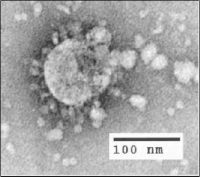
Photo from wikipedia
It is known that a synthetic aperture radar (SAR) image obtained by matched filtering (MF)-based algorithms always suffers from serious noise, sidelobes, and clutters. However, the improvement of the image… Click to show full abstract
It is known that a synthetic aperture radar (SAR) image obtained by matched filtering (MF)-based algorithms always suffers from serious noise, sidelobes, and clutters. However, the improvement of the image quality means the complexity of the SAR system will increase, which affects the application of the SAR image. The introduction of the sparse signal processing technique into SAR imaging proposes a new way to solve this problem. Sparse SAR image obtained by sparse recovery algorithms shows a better image performance than the typical complex SAR image with lower sidelobes and higher signal-to-noise ratio. As the most widely applied field of the SAR image, target classification relies on the SAR image with high quality. Therefore, a novel target classification model based on the amplitude and phase information of the sparse SAR image is introduced in this article. First, complex sparse image dataset is constructed by a novel iterative soft thresholding (BiIST) algorithm. Compared with typical regularization-based sparse recovery algorithms, BiIST not only can improve the quality of recovered image, but also can obtain a nonsparse solution with retaining phase information and background statistical distribution of the SAR image. Then, targets are classified by the proposed amplitude-phase convolutional neural network (AP-CNN). Typical SAR target classification networks imitate those on optical image, just using amplitude data. However, considering the particularity of the SAR image, the AP-CNN uses both amplitude and phase for training, which theoretically improves the classification accuracy. Experimental results show that the AP-CNN outperforms the typical amplitude-based CNN in target classification, both under standard operating conditions (SOCs) and extended operating conditions (EOCs). Results under SOC demonstrate that the AP-CNN improves the classification accuracy by 11.46% with only 1000 training samples. Even under EOC, the accuracy gap between the AP-CNN and CNN can reach 6.6% in the case of 800 training samples. This means that even if the number of samples is limited, the AP-CNN can obtain optimal classification result.
Journal Title: IEEE Journal of Selected Topics in Applied Earth Observations and Remote Sensing
Year Published: 2022
Link to full text (if available)
Share on Social Media: Sign Up to like & get
recommendations!